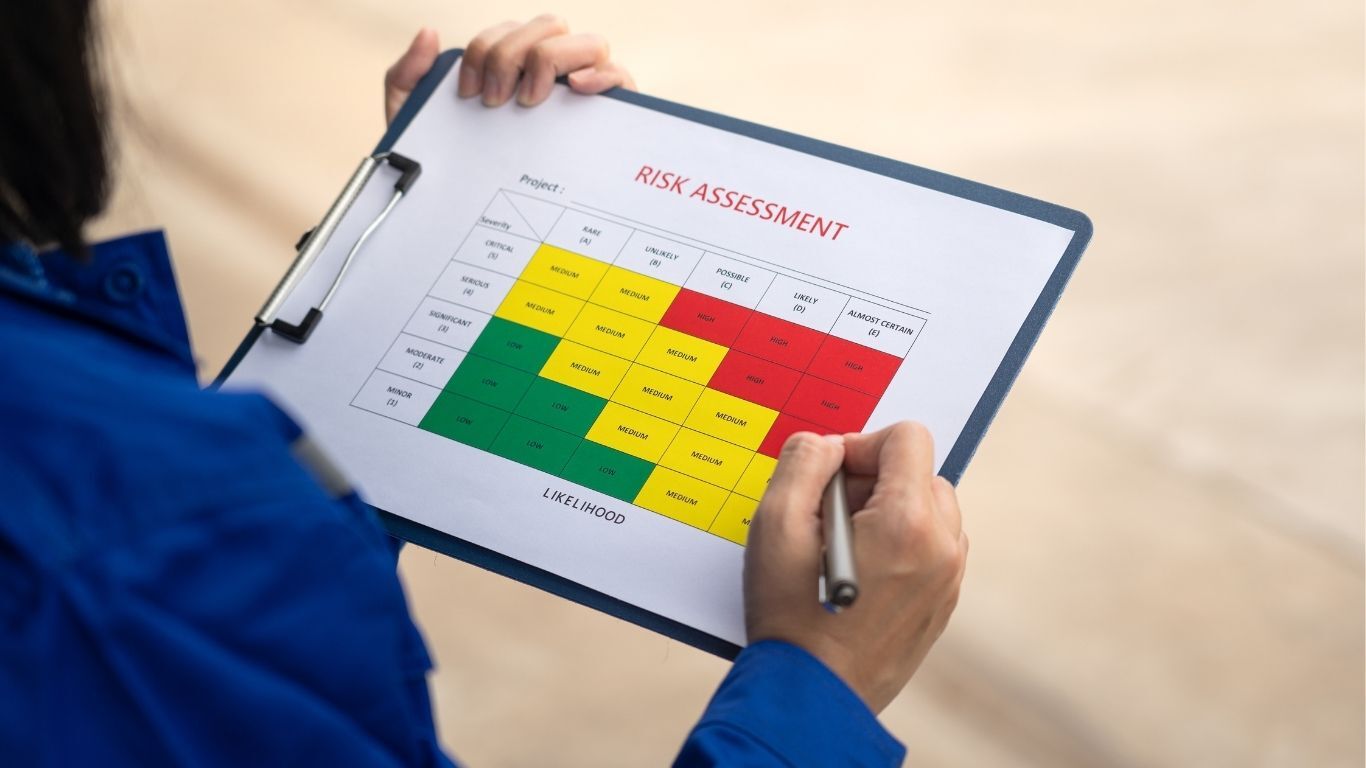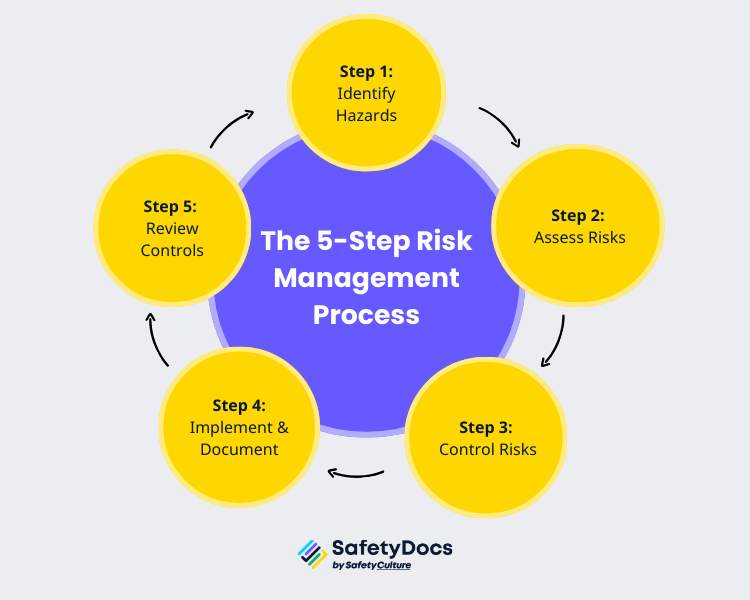This is the second in a four-part series on building a comprehensive workplace safety system.
Understanding the Difference: Hazard vs. Risk
Last week, we focused on identifying hazards, anything with the potential to cause harm. Now, we'll talk about risk, which is the next critical step in your safety journey. Understanding the difference between these two terms is fundamental to effective safety management:
- A hazard is the source of the potential harm. It’s a static state or object.
- Examples: A wet floor, an unguarded machine blade, a manual handling task involving a heavy box.
- A risk is a measure of the likelihood that a hazard will cause harm, combined with the potential severity of that harm. It is a dynamic probability.
- Examples: The risk of someone slipping, falling, and getting a serious head injury on a wet floor. The risk of a worker losing a finger from an unguarded machine.
The Purpose of a Risk Assessment
Simply identifying a hazard isn't enough. A risk assessment is the formal process of evaluating the risks associated with a hazard to determine if a control is needed. Not all hazards are created equal. A small trip hazard in a rarely used corner is a different priority than a faulty piece of equipment on a high-traffic production line. A risk assessment answers two fundamental questions to help you prioritise your efforts:
- How likely is it that a hazard will cause harm? (Likelihood)
- How severe will the harm be if it happens? (Consequence)
By evaluating these two factors, you can determine the overall level of risk. The goal is to make informed, data-driven decisions about which issues to address first.
How to Use a Risk Matrix
A Risk Matrix is a common and powerful tool for assessing risk. It’s a simple visual aid that helps you combine likelihood and consequence to get a risk score (e.g., Low, Medium, High, Extreme).
Here’s a typical example:

To use it effectively, follow these steps:
- Be Realistic (Likelihood): When assessing likelihood, think about how often people are exposed to the hazard and how easily an incident could happen.
- Consider the Worst Case (Consequence): For the consequence, don’t just think about minor injuries. What’s the worst possible outcome that could reasonably happen?
By plotting your hazard on this matrix, you get a clear indication of its priority. For example, a low-likelihood, major-consequence hazard might be a lower priority than a likely, moderate-consequence hazard.
The Five-Step Risk Assessment Process
A formal risk assessment involves more than just filling out a matrix. It’s a complete process.
- Identify the Hazard: Use the methods from Week 1 (walkarounds, consultation, data review) to find potential dangers.
- Assess the Risk: Evaluate the likelihood and consequence of the hazard using a risk matrix to determine the risk level. This is where you consider any existing controls.
- Control the Risk: If the risk is unacceptable, you must implement controls. This is where you use the Hierarchy of Controls, which we’ll cover in detail in Week 3.
- Implement and Document: Put your control measures in place and record them in a register.
- Review: Regularly review your controls to ensure they are still effective. This is our focus in Week 4.

Getting it Right in Your Workplace
- Involve Your Team: Ask your workers for their input. They have valuable insights into how tasks are performed and the risks involved that you may not have considered.
- Don't Overlook "Soft" Risks: Remember to assess psychosocial hazards like stress, bullying, and unreasonable deadlines.
- Document Everything: Keeping a record of your risk assessments is not just good practice, it's often a legal requirement.
By moving from hazard identification to a formal risk assessment, you can prioritise which issues to address first and make informed decisions about making your workplace safer.
Frequently Asked Questions
Q: Do I need a formal risk assessment for every task? Not necessarily. For routine, low-risk tasks, a quick mental check may be enough. However, a formal risk assessment is essential for new tasks, high-risk work, or when changes are made.
Q: What is the difference between inherent and residual risk? Inherent risk is the risk level before any controls are put in place. Residual risk is the risk level that remains after you have implemented your controls. The goal is to reduce the residual risk to an acceptable level.
Q: Who should be involved in a risk assessment? Under Australian WHS law, you must consult with your workers. The best risk assessments are done collaboratively with supervisors and the workers who perform the tasks.
Prioritise with a Free Toolkit from SafetyDocs by SafetyCulture
Assessing risk can seem complex, but our Risk Assessment Template + How-To Guide makes it simple. This free, ready-to-use resource (included in our National Safe Work Month Safety Essentials Pack) provides a clear framework and step-by-step instructions so you can confidently evaluate risks and get on with building a safer workplace.
Click here to download the pack and take control of your safety system.
Looking to take the next step in your safety journey? Our team of specialists can help. Whether you need more information, tailored policies, or complete safety management systems, we’re here to help you protect your business. Contact our Customer Care Specialists to learn more about our full suite of professional resources.
Author - Craig Cruickshank is the HSEQ Manager and Senior Technical Advisor at SafetyDocs by SafetyCulture.
Craig comes from a construction and environmental background, with experience in both the private and public sectors and is passionate about making health and safety information easy to find and understand for everyone.
Learn more about Craig's work on LinkedIn
Available for instant download and supplied in fully editable MS Word format for use in your business.
Please note that the above information is provided as a comment only and should not be relied on as professional, legal or financial advice.
Share This Article
